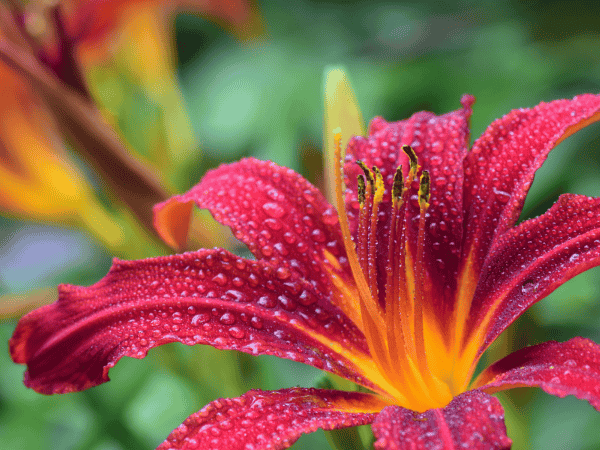
6 Perennials for Colour from Spring to Fall!
These six essential perennials are plants of size and substance. They can act as the backbone of your perennial garden. With the wide choice of cultivars available in each of these six basic plants, any colour scheme is possible.
Your perennial garden could realistically consist of just these perennials. You would have colour all year. But if space permits, it is so easy and fun to fill in and add to your perennial garden with the hundreds and hundreds of perennials available!
Flowering in MAY & JUNE
Bearded Iris
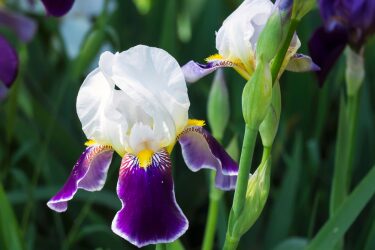
Unlike the common wild Iris, Bearded Iris (like Messenger pictured here) need a sunny location and well-drained soil. When planting, the rhizomes should be set just below the surface of the soil. After flowering, the stems should be cut back, and leaves left alone until fall. Before winter, the foliage should be cut back to a few inches from the ground and dead leaves removed. Don’t mulch, as holding moisture near the rhizomes can cause rotting.
Peonies

Peonies (like Festiva Maxima pictured here) are long-lived plants that will continue to flower for generations. They don’t like to be disturbed. However, if you do need to move them, they should be separated into sections with 3-5 ‘eyes.’ A large clump moved whole would most likely stop blooming. Plant peonies no more than two inches deep, with ‘eyes’ into the soil. They will not flower if they are planted deeper.
Flowering in JUNE & JULY
Oriental Poppies

Oriental poppies set the June garden ablaze with colour. They need well-drained soil and full sun or partial shade. To plant poppies (like Royal Wedding pictured here), set the root straight down into a planting hole, deep enough that the crown is covered by at least 3 inches of soil. After June’s giant blooms have faded, the flowerheads should be removed and not allowed to form seeds. The foliage then dies down and can leave a void in the garden. Plant daylilies nearby to fill the space. Mulch for winter, but do not cover the new basal rosettes that form in September.
Delphiniums
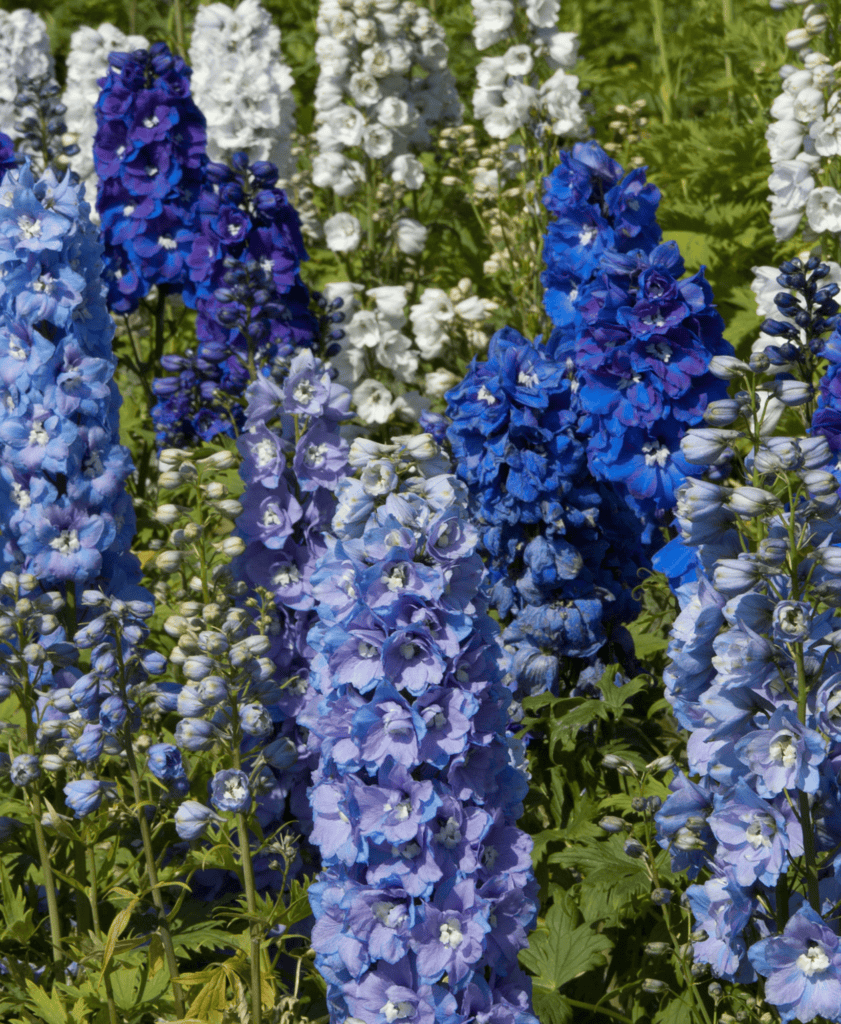
These stately perennials need rich, well-drained soil. Use lots of manure in the planting mix and mulch annually. Delphiniums (like the ‘Superstars‘ mixture pictured here) are best planted in groups of 3 of a kind. By cutting out all but 3 of the best shoots to about 15cm, they will produce faster, stronger, better flowers. Plant in a spot protected from wind and/or stake delphiniums to save them from high winds. In about mid-July, when the main flowering period is over, cut some of the flower stems back to the first leaves so that they will re-bloom in August and September.
Flowering in JULY & AUGUST
Daylilies
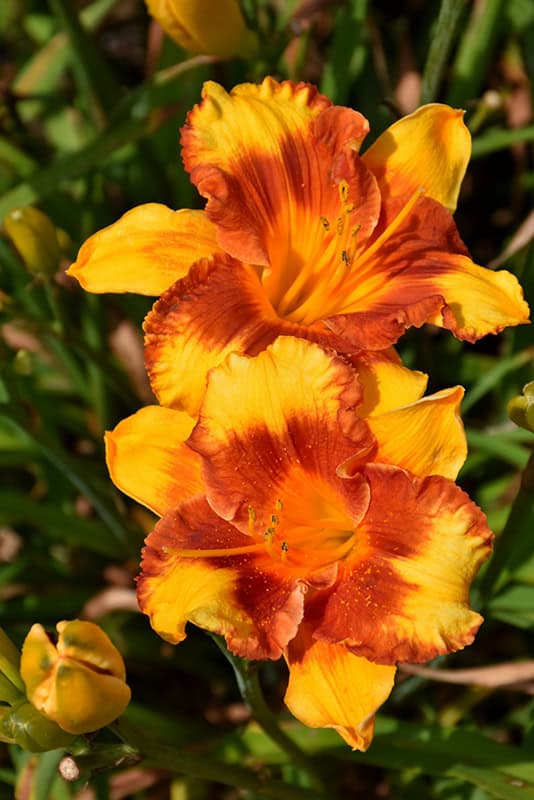
Daylilies are the heart of the mid-summer garden. They flower pretty much non-stop through the heat of July and August (Stella D’Oro, pictured here, continues to bloom through September). They come in a huge range of colours. They are hardy, tough and reliable. Each flower lasts only a day, but they are continuously in bloom over many weeks.
Flowering in AUGUST & SEPTEMBER
Summer Phlox
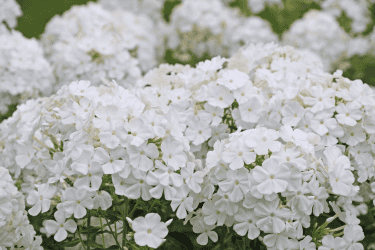
These tall phlox are invaluable for continuing the summer-long display of colour in the perennial garden. Choose a few kinds and plant them in irregular drifts for a magnificent display. There are a variety of colours from which to choose, many with a contrasting eye.
Re-flowering in SEPTEMBER
Delphiniums
If you cut, some of the flower stems back to the first leaves in about mid-July, when the main flowering period is over, they will re-bloom in August and September.
